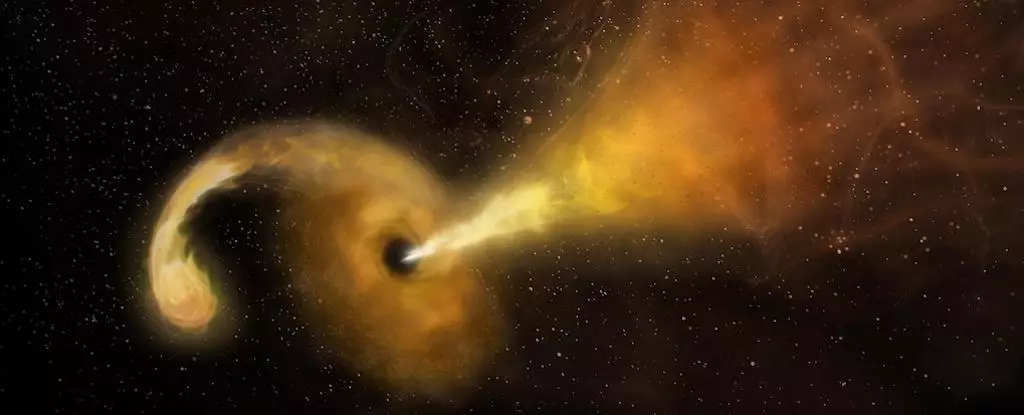Recently, astronomers have encountered an extraordinary astronomical phenomenon that has left them both astonished and puzzled. This cosmic event, designated EP240408a, was unveiled on 8 April 2024 by the Einstein Probe, an X-ray space telescope. Initially mistaken for a typical gamma-ray burst, which releases intense X-rays, further observations conducted across a spectrum of wavelengths have illuminated complexities that depart from known cosmic events. EP240408a’s uniqueness lies not only in its properties but also in the implications it carries for our understanding of the universe.
EP240408a exhibited a series of unusual behaviors over its brief duration. The event flared up, emitting soft X-rays during its first ten seconds, subsequently entering a consistent glow that persisted for approximately four days before quickly fading. This temporal framework marks an anomaly when comparing it to the behavior of conventional gamma-ray bursts, which generally last mere hours. The energy output of EP240408a was also categorized as either too bright or too dim for existing types of cosmic explosions, creating a rift in astronomical classification.
The extensive observation efforts involved multiple ground- and space-based telescopes, including the Nuclear Spectroscopic Telescope Array (NuSTAR), Swift, and the Very Large Array (VLA). Together, they contributed valuable data aimed at deciphering the conundrum that EP240408a presents. However, instead of providing clarity, these findings intensified the mystery surrounding the event, calling into question previously accepted knowledge in cosmology.
The recent insights brought forth by researchers, particularly astronomer Brendan O’Connor from Carnegie Mellon University, offer a compelling hypothesis: EP240408a is likely connected to the death throes of a white dwarf star that is undergoing destruction by a medium-sized black hole. This scenario aligns with the characteristics observed, particularly the unusual jet of material directed straight toward Earth. The implications of witnessing such a phenomenon are significant, as they hint at a process that may not have been documented previously within the realms of astronomical study.
However, this hypothesis does not come without its challenges. As O’Connor pointed out, while EP240408a aligns with multiple characteristics of known events, it fails to entirely conform to the features of any single type. This suggests that EP240408a could either represent a new subset of transient events or embody a unique occurrence altogether.
The universe is replete with transient phenomena, each characterized by their dramatic bursts of energy caused by various celestial activities. Supernovae explosions, black hole mergers, and stellar devourments showcase the dazzling yet violent nature of cosmic life cycles. Astronomers typically identify these events by investigating their duration, emission frequency, and observable light spectrum. In this context, EP240408a disrupts the established paradigm, challenging researchers to rethink how we catalog and understand cosmic occurrences.
One intriguing aspect revealed during the observations of EP240408a was the absence of radio emissions, which are typically anticipated when observing bright X-ray signals. The VLA’s scans conducted post-initial flare-up found no evidence of these expected radio waves, further complicating the riddle that surrounds EP240408a. O’Connor noted this peculiar behavior, stating that such luminosity usually comes with an accompanying radio counterpart.
Ruling out well-established events such as quasars and fast blue optical transients has led astronomers to consider tidal disruption events (TDEs) as a plausible explanation. TDEs occur when a black hole disrupts a star, leading to bursts of energy that might match the properties exhibited by EP240408a. The notion that this event involved an intermediate-mass black hole consuming a white dwarf star posits exciting implications for the field of astrophysics, particularly regarding the behavior of such systems.
A significant hurdle remains regarding the lack of radio signals, and researchers propose that it may simply be a matter of timing. Historical studies suggest that radio emissions can take an extensive period, sometimes spanning hundreds of days, to manifest as a result of a TDE. Observations in the coming months and years will be crucial; should radio emissions eventually appear, they might provide the key to solving the puzzle of EP240408a.
EP240408a serves as a clarion call for exploration within the field of astronomy. This singularly unique celestial event not only challenges existing classifications but also potentially signifies a new frontier in astrophysical research. As more data is collected, the quest to understand EP240408a may very well unlock previously uncharted territories in our comprehension of the universe. For astronomers, this represents both a conundrum and an opportunity—a chance to delve deeper into the enigmatic nature of cosmic phenomena that have long captivated the imagination of humankind.


Leave a Reply